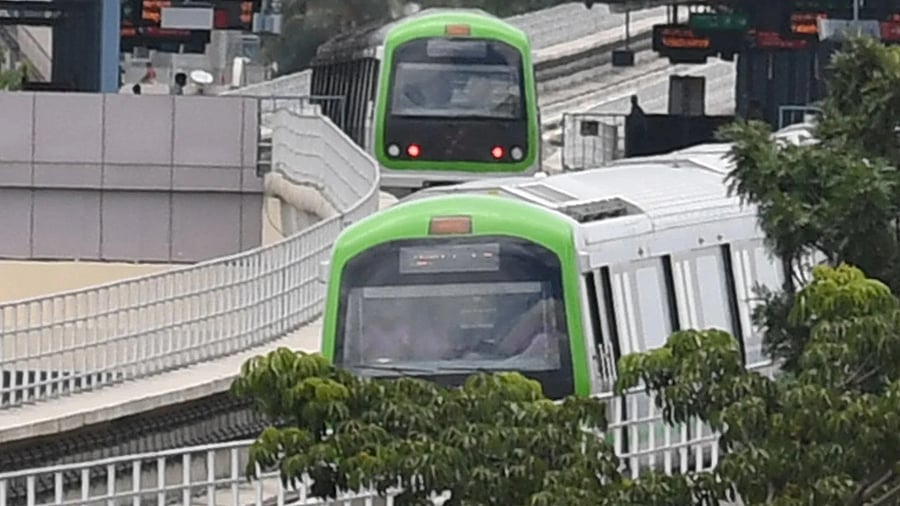
Representative image showing Namma Metro.
Credit: DH File Photo
The Karnataka government’s decision to proceed with a Detailed Project Report (DPR) for the proposed Bengaluru-Tumakuru Metro line is misguided on multiple fronts: it defies logic, expert advice, and overlooks the basic principles of transport economics. Commissioning a DPR despite widespread concerns about feasibility is a waste of public funds on an idea that should never have been considered in the first place.
Home Minister G Parameshwara, who represents Tumakuru, has claimed that a Qatari company is willing to fully fund the line under a public-private partnership (PPP) model. But the availability of funds is not a licence to squander it on an ill-conceived project; a white elephant paid for by foreign capital is still a white elephant.
The state has far more urgent mobility needs than building a metro where it is neither required nor suitable. Metros are designed for intra-city travel, meant for short, high-frequency trips, with closely spaced stations, rapid acceleration, and dense urban catchments. Stretching such a system across 70 km to connect two cities defeats its very purpose.
According to BMRCL, the Madavara-Nelamangala stretch would have stations every 1-2 km, while the Nelamangala-Tumakuru section may need stops 4-5 km apart – an awkward compromise that serves neither urban nor inter-city demand. This mismatch would result in slow, inefficient journeys where the metro could take almost two hours, making travel by road faster.
With unimpressive speeds, poor comfort, and abysmal operational efficiency, the concept collapses under its own contradictions. Globally, metros do not connect cities; regional and suburban rail do.
The most indefensible aspect of the proposal is the duplication of existing infrastructure currently being upgraded. The South Western Railway is investing Rs 3,500 crore to quadruple the Bengaluru-Tumakuru line, a fraction of the projected metro cost. K-RIDE has also proposed a suburban rail line to Tumakuru. Building a metro parallel to an upgraded rail corridor is the very definition of wasteful expenditure.
What Tumakuru needs is a multimodal transport hub at Bengaluru’s north-western gateway, where commuters can seamlessly transfer to the city’s metro or BMTC bus services after alighting from suburban or mainline trains. The trains themselves can continue to key city stations like Yeshwanthpur or KSR Bengaluru, enabling deeper city access without a costly Rs 20,000-crore metro.
The Tumakuru Metro is not a mobility solution. It is a politically convenient, financially reckless, technically unsound vanity project that risks bleeding taxpayers for decades. The government must shelve the DPR, abandon this misguided proposal, and focus on completing projects that genuinely serve public interest.
